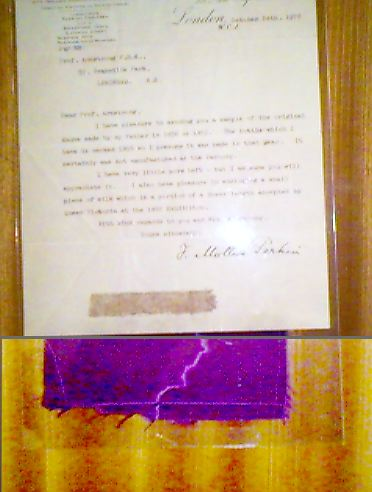Pelger–Huët anomaly, congenital and acquired, also pince-nez, laminopathy and a little ebola
Pelger–Huët anomaly is a blood laminopathy associated with the lamin B receptor, wherein several types of white blood cells (neutrophils and eosinophils) have nuclei with unusual shape (being bilobed, peanut or dumbbell-shaped instead of the normal trilobed shape) and unusual structure
Complement receptor type 1 (CR1)
Complement receptor type 1 (CR1) also known as C3b/C4b receptor or CD35 (cluster of differentiation 35) is a protein that in humans is encoded by the CR1 gene. This gene is a member of the regulators of complement activation (RCA) family and is located in the ‘cluster RCA’ reg
Juvenile hormone (and Methoprene)
Juvenile hormones (JHs) are a group of acyclic sesquiterpenoids that regulate many aspects of insect physiology. The first discovery of a JH was by Vincent Wigglesworth. JHs regulate development, reproduction, diapause, and polyphenisms. The chemical formula for juvenile hormone is C18H30O3.
The Yolk’s On Us: Unraveling the Secrets of Vitellogenesis
Hold onto your ovaries, folks! We’re about to dive into the wild world of Vitellogenesis – the cellular rave where eggs get their groove on! Picture this: You’re a lonely liver cell, minding your own business, when suddenly – BAM! – you’re hit with a tsunami of es
Erich Traub (1906 – 1985) German veterinarian, scientist and virologist who specialized in foot-and-mouth disease, Rinderpest and Newcastle disease
Erich Traub worked directly for Heinrich Himmler, head of the Schutzstaffel (SS), as the lab chief of the Nazis’ leading bio-weapons facility on Riems Island. Note: Riems is home to the oldest virological research institution in the world, now called the Friedrich Loeffler
Phosphopyruvate hydratase, aka enolase, is a metalloenzyme that catalyses the conversion of 2-phosphoglycerate (2-PG) to phosphoenolpyruvate (PEP), the ninth and penultimate step of glycolysis
Phosphopyruvate hydratase, usually known as enolase, is a metalloenzyme (EC 4.2.1.11) that catalyses the conversion of 2-phosphoglycerate (2-PG) to phosphoenolpyruvate (PEP), the ninth and penultimate step of glycolysis. The chemical reaction is
Farnesol and Farnesene
Farnesol is a natural 15-carbon organic compound which is an acyclic sesquiterpene alcohol. Under standard conditions, it is a colorless liquid. It is hydrophobic, and thus insoluble in water, but miscible with oils. Farnesol is produced from 5-carbon isoprene 
Mauveine aka aniline purple
Mauveine, also known as aniline purple and Perkin’s mauve, was one of the first synthetic dyes. It was discovered serendipitously by William Henry Perkin in 1856 while he was attempting to synthesise the phytochemical quinine for the treatment of malaria. It is also among the first
Carbonic anhydrases (or carbonate dehydratases) and inhibitors
The carbonic anhydrases (or carbonate dehydratases) (EC 4.2.1.1) form a family of enzymes that catalyze the interconversion between carbon dioxide and water and the dissociated ions of carbonic acid (i.e. bicarbonate and hydrogen ions). The active site of most carbonic anhydras
HLA-B major histocompatibility complex, class I, B
HLA-B (major histocompatibility complex, class I, B) is a human gene that provides instructions for making a protein that plays a critical role in the immune system. HLA-B is part of a family of genes called the human leukocyte antigen (HLA) complex. The
Chymase and Chymosin – Rumored To Be Synonyms (and a little renin and rennin)
Chymase Alternative name for chymosin [“chymase .” A Dictionary of Food and Nutrition. . Encyclopedia.com. 25 Aug. 2022 https://www.encyclopedia.com] Mast Cell Chymase and Tryptase and some MMPs Chymase and tryptase are packaged in secret






